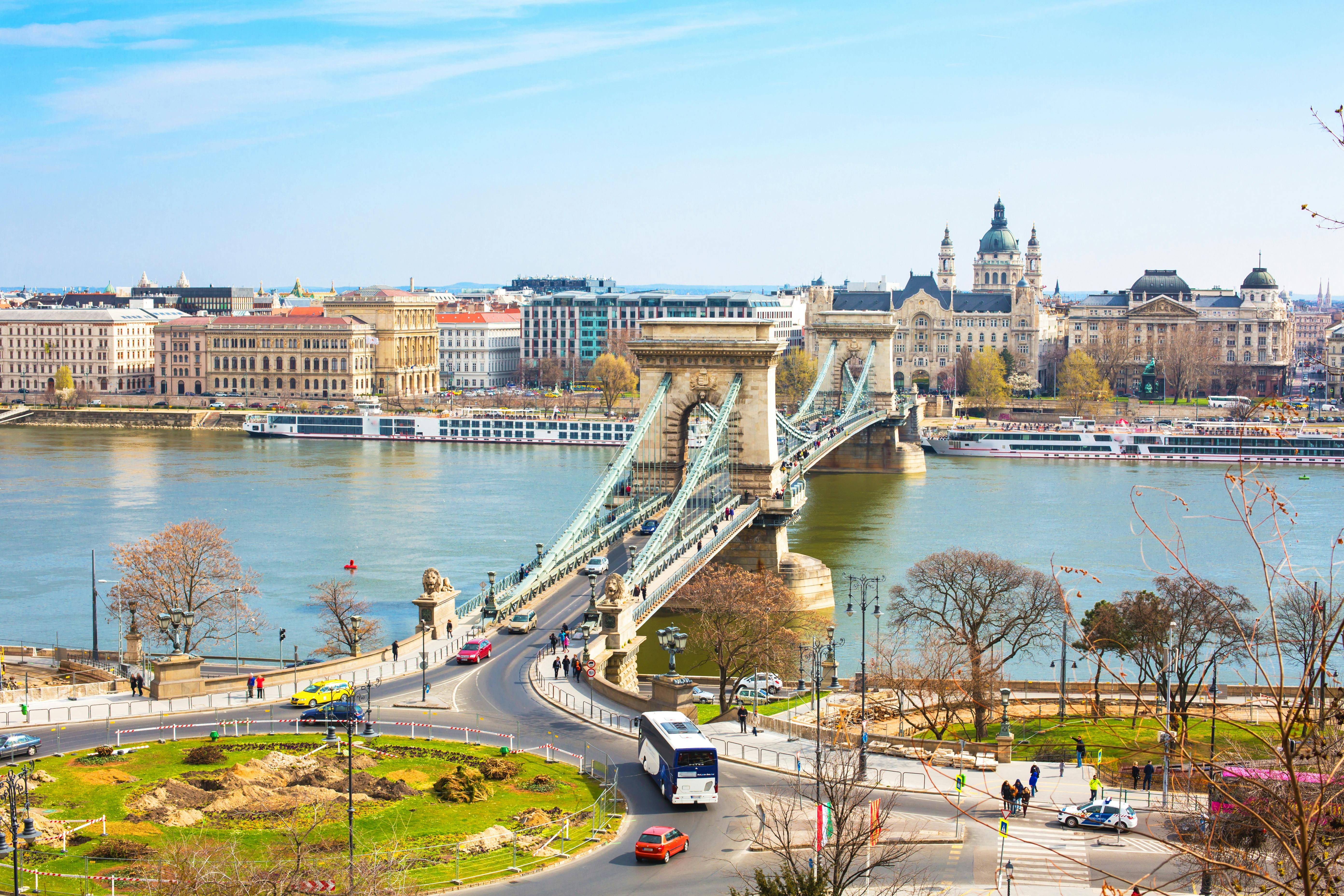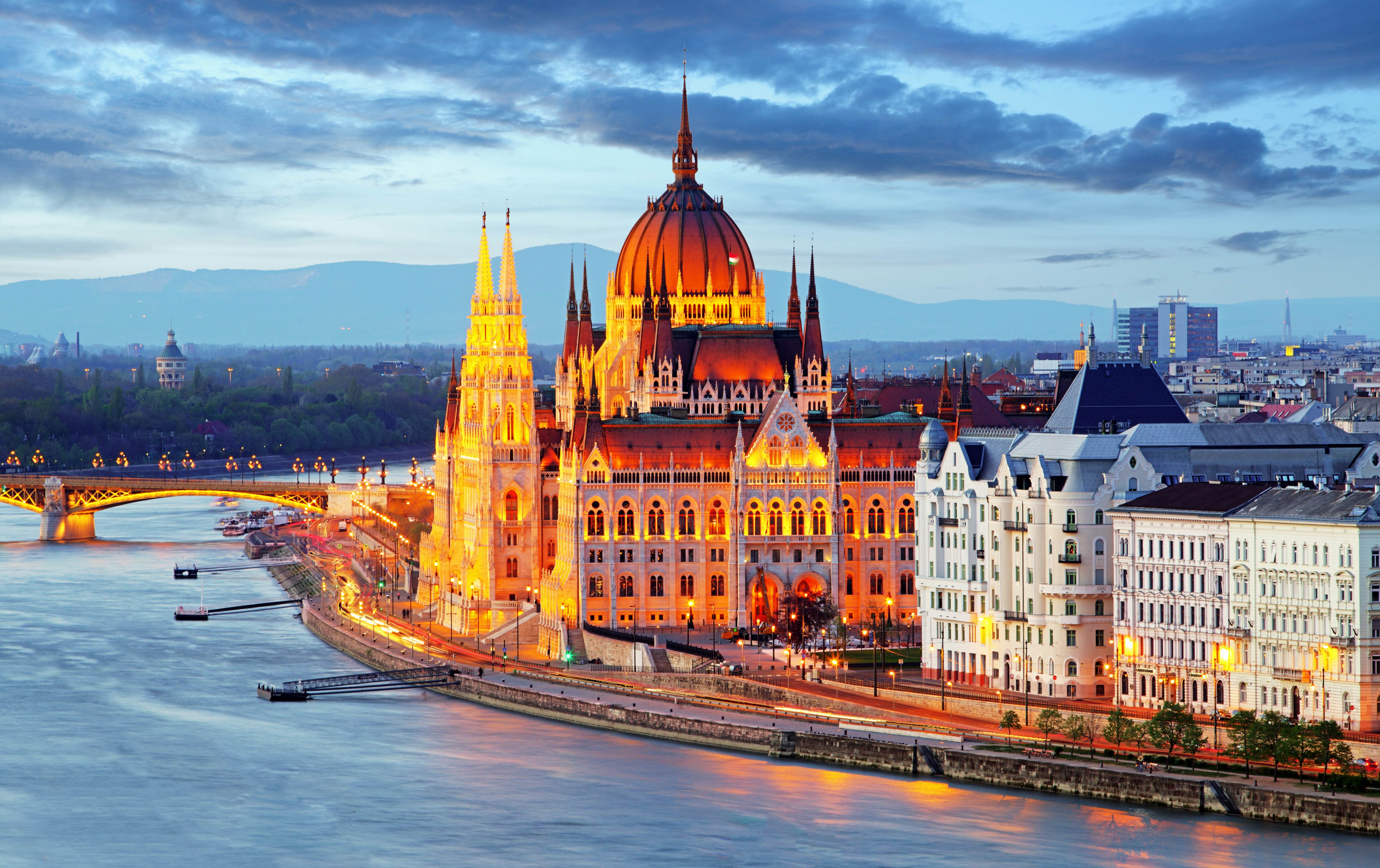



Budapest, Hungary’s capital, is bisected by the River Danube. Its 19th-century Chain Bridge connects the hilly Buda district with flat Pest. A funicular runs up Castle Hill to Buda’s Old Town, where the Budapest History Museum traces city life from Roman times onward. Trinity Square is home to 13th-century Matthias Church and the turrets of the Fishermen’s Bastion, which offer sweeping views.
Why: Mild weather, blooming gardens (especially Margaret Island & City Park), fewer crowds than summer.
Events: Budapest Spring Festival, Cherry Blossom Festival.
Why: Comfortable temperatures, golden foliage, and a more relaxed atmosphere.
Events: Budapest Wine Festival, Cafe Budapest Contemporary Arts Festival.
Why: Christmas markets, thermal baths in the snow, fewer tourists.
Note: Cold and sometimes gray, but festive.
Liszt Ferenc International Airport (BUD) – Budapest’s main airport.
Connected to most European capitals and some global cities.
Regular international trains from Vienna, Prague, Bratislava, Zagreb, etc.
Main stations: Keleti (East), Nyugati (West), Déli (South).
Long-distance buses (e.g., FlixBus, RegioJet) arrive at Népliget Bus Station.
Budget-friendly option from major European cities.
Well-connected via European highways (M1 from Vienna, M5 from Belgrade, M7 from Zagreb).
City driving can be tricky due to narrow streets and limited parking.
Danube River cruises connect cities like Vienna, Bratislava, and Budapest — a scenic but slower option.
Historic royal palace complex with panoramic views of the Danube and Pest side. Don’t miss the National Gallery and History Museum.
Gothic church with colorful tiled roof and a fairytale-like terrace with some of the best views in the city.
Iconic suspension bridge linking Buda and Pest. Beautifully lit at night.
Neo-Gothic masterpiece along the Danube — grand both inside and out.
One of Europe’s largest medicinal baths. Popular year-round, even in winter snow!
A peaceful island park in the middle of the Danube — ideal for biking, jogging, or picnics.
The largest synagogue in Europe and a moving Holocaust memorial site.
Grand square with statues of Hungary's national leaders, right next to a huge park, Vajdahunyad Castle, and Budapest Zoo.
Indoor market for local food, paprika, sausages, and souvenirs.
For art lovers and those interested in Hungary’s WWII and Communist-era history.
Take a Danube River Cruise (day or night) for stunning views of both sides.
Visit Ruin Bars in the Jewish Quarter – unique pubs inside old, crumbling buildings (start with Szimpla Kert).
Sample Hungarian wine or pálinka in a wine-tasting cellar.
Enjoy a Thermal Bath Spa Day – try Gellért Baths or Rudas Baths for variety.
Climb Gellért Hill to the Citadella for sunset views.
Walk along Andrássy Avenue (UNESCO World Heritage Site) and admire 19th-century architecture.
Try a cooking class to make goulash or chimney cakes.
Ride the Budapest Eye (giant Ferris wheel) at Erzsébet Square.
Explore underground – take a cave tour in Pálvölgyi or Szemlőhegyi caves.
Four Seasons Hotel Gresham Palace – Art Nouveau masterpiece on the Danube.
Aria Hotel – Music-themed luxury near St. Stephen's Basilica.
Matild Palace – Lavish new hotel in a historic palace building.
Hotel Rum – Boutique hotel with a rooftop bar.
Prestige Hotel – Classy, centrally located with elegant rooms.
Estilo Fashion Hotel – Stylish and close to Great Market Hall.
Maverick City Lodge – Modern hostel with private rooms, in the Jewish Quarter.
Meininger Budapest – Clean, social, and great for groups or solo travelers.
Pal's Hostel & Apartments – Quirky mix of hostel rooms and small apartments.
Great option for longer stays or families — many are available in District V (Belváros-Lipótváros) and District VII (Jewish Quarter).
Gulyás (Goulash) – Hearty beef soup with paprika, vegetables, and dumplings.
Pörkölt – A meat stew similar to goulash, usually served with nokedli (dumplings).
Lángos – Deep-fried dough topped with sour cream and cheese, perfect street food.
Hortobágyi palacsinta – Savory crepes filled with meat and paprika sauce.
Töltött káposzta – Stuffed cabbage rolls with rice and pork.
Dobos Torte & Kürtőskalács (chimney cake) – Must-try Hungarian desserts.
Hungarikum Bisztró – Cozy, friendly, classic dishes, popular with locals and tourists alike.
Paprika Vendéglő – Known for authentic goulash and generous portions.
Rosenstein Vendéglő – Family-run, old-school place with Jewish-Hungarian fusion.
Borkonyha Winekitchen – Michelin-starred, inventive Hungarian cuisine with a vast wine list.
Stand – Contemporary fine dining, one of the best in the country.
Costes Downtown – Michelin-starred with local ingredients in a modern setting.
Karaván Street Food Court – Great for trying lángos, sausages, burgers, and vegan bites.
Bors Gastro Bar – Famous for unique soup-and-sandwich combos.
Zing Burger – Local burger chain with a cult following.
New York Café – Stunning interior, known as "the most beautiful café in the world."
Ruszwurm – Historic pastry shop in Buda, near Matthias Church.
Gerbeaud – Classic café with rich cakes, good coffee, and old-world charm.
Budapest is a center for classical music, opera, and ballet. Venues like the Hungarian State Opera and Franz Liszt Academy showcase Hungary’s rich musical tradition.
Grand buildings, wide boulevards, and ornate cafés reflect its time as a co-capital of the Austro-Hungarian Empire. There’s a mix of Habsburg elegance and modern urban buzz.
A symbol of Budapest's post-Communist revival — abandoned buildings in the Jewish Quarter converted into funky bars, galleries, and community spaces with mismatched furniture and art.
Locals regularly visit thermal baths — not just for relaxation, but as a social and health tradition. Baths like Széchenyi and Gellért are part of everyday life.
The city wears its history — WWII and Communist-era monuments, the Shoes on the Danube memorial, and the House of Terror museum reflect a deep cultural consciousness.
From hand-embroidered textiles to Tokaji wine and paprika, Budapest blends its folk roots with urban sophistication. Festivals often feature local music, dance, and artisan markets.
Hungarians are proud of their language, heritage, and cuisine. While many speak English in Budapest, locals appreciate it when visitors learn a few words like “köszönöm” (thank you) or “egészségedre” (cheers).